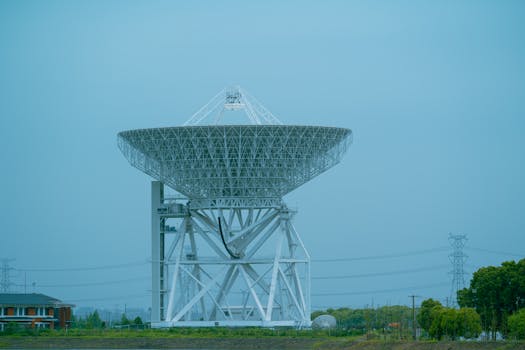
The Future of Connectivity: Latest Breakthroughs in Satellite Telecommunications
The Future of Connectivity: Latest Breakthroughs in Satellite Telecommunications is an exciting and rapidly evolving field that is transforming the way we communicate and access information. Satellite telecommunications have come a long way since the launch of the first commercial communications satellite, Intelsat 1, in 1965. Today, satellites play a crucial role in providing global connectivity, enabling communication services such as telephone, internet, and television to reach even the most remote and underserved areas of the world.
Satellite telecommunications offer a wide range of benefits, including global coverage, reliability, and flexibility. Satellites can provide connectivity to areas where traditional fiber-optic cables and cellular networks are not available or are not cost-effective. This makes them an essential tool for providing communication services to remote and rural communities, as well as for supporting disaster relief and emergency response efforts.
Latest Breakthroughs in Satellite Telecommunications
Several recent breakthroughs in satellite telecommunications are poised to further transform the industry and enhance global connectivity. One of the most significant advancements is the development of high-throughput satellites (HTS), which offer significantly faster data speeds and greater capacity than traditional satellites. HTS use advanced technologies such as spot beams and frequency reuse to provide higher data rates and more efficient use of bandwidth.
Another significant development is the launch of low-Earth orbit (LEO) satellite constellations, such as those being developed by companies like SpaceX and OneWeb. These constellations consist of hundreds or even thousands of small satellites that work together to provide global coverage and high-speed connectivity. LEO satellites have several advantages over traditional geostationary satellites, including lower latency, higher data rates, and greater flexibility.
Innovations in Satellite Technology
In addition to the development of HTS and LEO satellites, several other innovations are transforming the satellite telecommunications industry. One of the most significant is the use of advanced materials and manufacturing techniques to produce smaller, lighter, and more efficient satellites. This has enabled the development of smaller satellites that can be launched at lower cost and with greater frequency.
Another important innovation is the use of artificial intelligence (AI) and machine learning (ML) to optimize satellite operations and improve network performance. AI and ML can be used to predict and prevent network congestion, optimize data routing, and improve satellite maintenance and troubleshooting. This can help to reduce costs, improve network reliability, and enhance the overall quality of service.
Impact on Global Connectivity
The latest breakthroughs in satellite telecommunications are having a profound impact on global connectivity. Satellites are playing a critical role in providing communication services to remote and underserved areas, as well as supporting disaster relief and emergency response efforts. They are also enabling the development of new applications and services, such as satellite-based internet of things (IoT) and precision agriculture.
The use of satellites to provide global connectivity is also having a significant impact on the economy and society. It is enabling the creation of new jobs and industries, as well as improving access to education, healthcare, and other essential services. Satellites are also helping to bridge the digital divide, providing connectivity to communities that were previously unserved or underserved.







